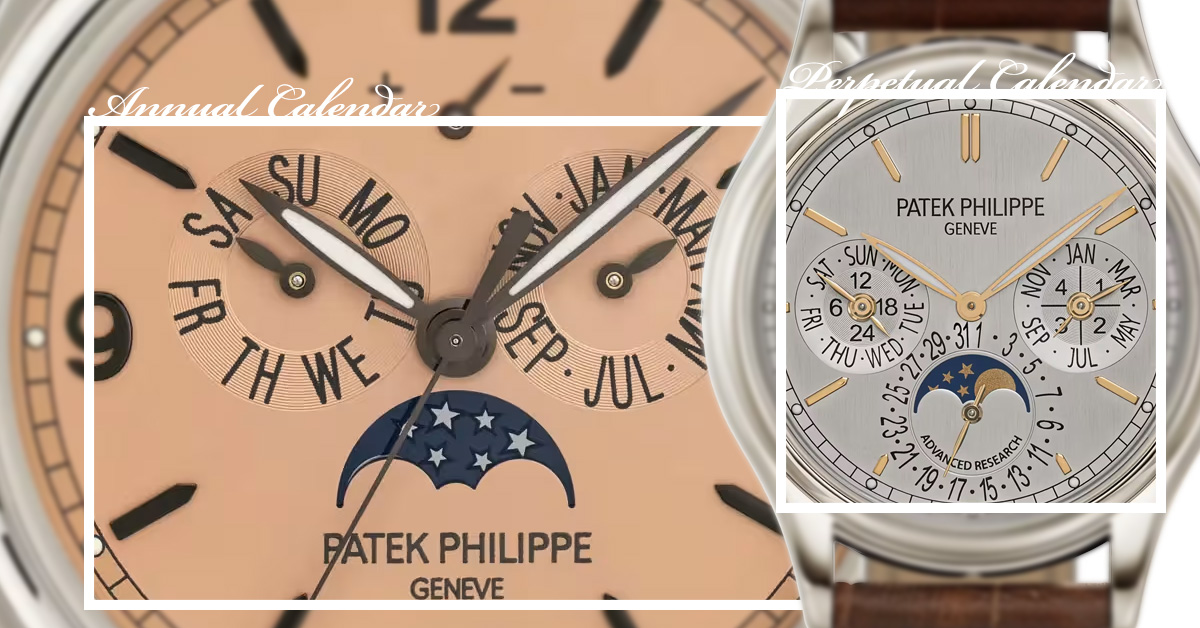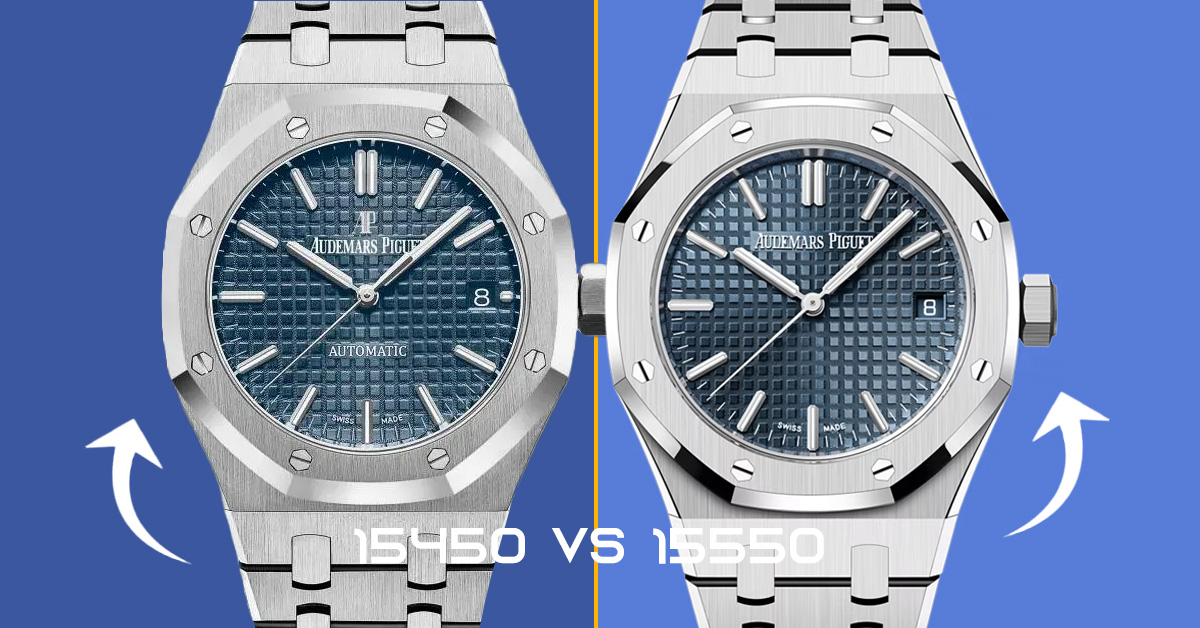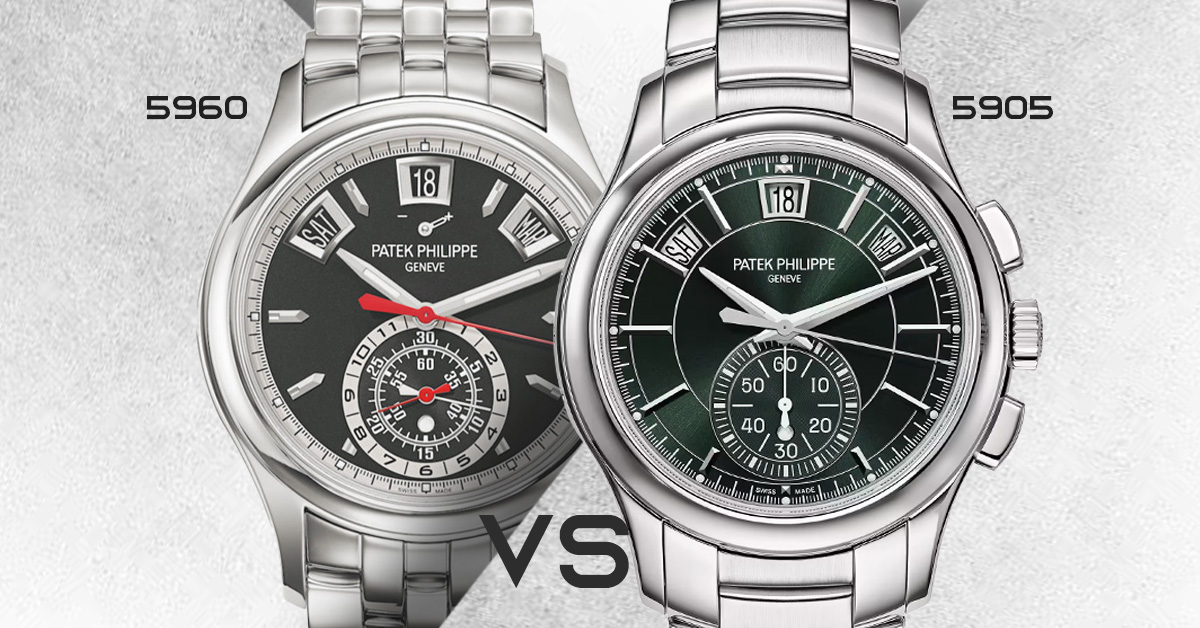
Annual Calendar vs Perpetual Calendar Watches: Expert Guide
You’ll find two remarkable achievements in watchmaking history as you start learning about annual calendar vs perpetual calendar watches. Patek Philippe created the first perpetual

You’ll find two remarkable achievements in watchmaking history as you start learning about annual calendar vs perpetual calendar watches. Patek Philippe created the first perpetual calendar wristwatch in 1925. The annual calendar watch came much later – Patek Philippe introduced it in 1996.
These timepieces showcase different levels of horological complexity. A perpetual calendar watch stands as an engineering marvel. It adjusts automatically for varying month lengths and leap years without manual correction until the year 2100. The annual calendar watch needs just one adjustment each year, usually at February’s end. The names might sound alike, but the difference between annual calendar and perpetual calendar mechanisms runs deep. Perpetual calendars pack hundreds of tiny components. Annual calendars feature a simpler design. The comparison between complete calendar vs annual calendar options reveals important variations in complexity, price range, and maintenance needs.
This knowledge helps both seasoned collectors and luxury watch newcomers make smart choices about these sophisticated timepieces. We’ll break down everything you need to know about these remarkable calendar complications in this piece.
Calendar watches are available in many levels of sophistication. Each type has unique capabilities and needs different maintenance. The main difference between these timepieces lies in how they handle months of varying lengths in our calendar system.
A complete calendar watch (sometimes called a triple calendar) shows the day, date, and month, and often includes a moon phase indication. This might seem like a complete solution at first glance, but these watches need adjustment five times a year—after all months with fewer than 31 days. These watches work on a basic 31-day cycle and reset after completing 31 24-hour periods.
Annual calendar watches are a major step forward. They can automatically adjust for months with 30 or 31 days and need manual correction just once a year—at the end of February. Patek Philippe introduced these watches in 1996 as a more affordable option compared to perpetual calendars.
The perpetual calendar watch stands as one of watchmaking’s greatest achievements. This mechanical marvel tracks months of different lengths and handles leap years. It won’t need adjustment until the year 2100. These watches have a “mechanical memory” of 1,461 days (four years) that shows the exact length of each month.
Thomas Mudge created the first perpetual calendar for pocket watches in 1762. Patek Philippe made the first wristwatch version in 1925. The mechanism uses a complex system of gears, cams, and levers that automatically handle the Gregorian calendar’s irregularities.
Annual calendar watches use a specialized 24-hour driving wheel with two fingers. One finger moves the date forward each midnight, while the other tracks months with 30 or 31 days. The date wheel cleverly skips the 31st for 30-day months to show the correct date.
The watch’s mechanism uses a specially shaped month wheel with notches for shorter months. These notches help the movement recognize when to skip day 31 and move to the next month. Annual calendars use about 5 parts in their mechanism, while perpetual calendars need hundreds of parts.
Annual calendars strike a practical balance. They’re more advanced than complete calendars but cost less than perpetual calendars because they’re simpler to build and assemble.

A mechanical marvel that tracks time’s passage lies inside every calendar timepiece. The true genius behind annual calendar vs perpetual calendar watches becomes clear by understanding how these mechanisms function.
A specialized gear system powers the annual calendar’s beating heart instead of traditional cams and levers. A 12-pointed month star wheel sits at its core and controls date transitions. This elegant solution uses month wheels that have five longer teeth representing 30-day months. These teeth make the mechanism rotate an additional time when activated and effectively skip the 31st day. The date displays correctly whatever the month has 30 or 31 days.
A 48-step cam powers perpetual calendars and completes one full rotation every four years. This cam’s recesses come in varying depths that determine month transitions. The mechanism has:
Moonphase displays feature in most perpetual calendars and track the 29.53-day lunar cycle. A 59-tooth driving wheel advances once daily in these typical displays. Standard moonphase mechanisms show a one-day error every 2.5 years, while sophisticated versions maintain accuracy for 122 years.
Leap year indicators help owners track their position in the four-year cycle and usually display “IV” or “4” markings.
These sophisticated timepieces have differences that go beyond their names. Their practicality, value, and appeal among watch enthusiasts set them apart.
The biggest difference shows up in how often they need adjusting. Annual calendar watches need correction once a year at February’s end to match its unique length. A perpetual calendar needs no adjustments until 2100. These watches know how to recognize regular years and leap years on their own.
Annual calendar mechanisms use about 5 parts in their efficient design. Perpetual calendars need hundreds of intricate components that work together. Patek Philippe’s first annual calendar module had 154 components. This number was 44 more than their perpetual calendar modules back then. Watch makers face an incredible engineering challenge with this complexity.
The gap in complexity creates a clear price difference. Annual calendars offer a more available entry point into luxury calendar watches. Perpetual calendars sit at watchmaking’s highest level and cost tens of thousands more than annual models.
Perpetual calendars stay perfectly accurate until 2100, when the Gregorian calendar skips a leap year. These watches will need their first correction then – moving forward one day on March 1st, 2100. Annual calendars need yearly updates but have simpler mechanisms. This simplicity might mean fewer mechanical problems over time.

Luxury watches demonstrate their creators’ technical excellence through remarkable calendar complications. Each manufacturer brings its unique vision and craftsmanship to these intricate mechanisms.
Patek Philippe leads the perpetual calendar world since creating the first wristwatch version in 1925. Their Grand Complications Perpetual Calendar Chronograph displays day and month windows with an elegant moonphase at 6 o’clock. The Master Ultra Thin Perpetual Calendar by Jaeger-LeCoultre features a sleek 9.2mm profile and 70-hour power reserve, complemented by dauphine hands on an eggshell dial. Audemars Piguet made history in 1978 with its ultra-thin perpetual calendar, which claimed the title of world’s thinnest timepiece.
Rolex’s Sky-Dweller transformed annual calendars with a groundbreaking month indication system. The watch features 12 windows around the dial that mark months, with the current month highlighted in red. The Portugieser Annual Calendar from IWC shows month, date, and day through three windows at 12 o’clock and boasts a 7-day power reserve. F.P. Journe’s Octa Calendrier stands out with its unique retrograde date along the dial’s left side that jumps back at month-end.
Each brand’s esthetic signature shines through—from Patek’s classic refinement to AP’s athletic Royal Oak collection. Rolex takes a clean yet practical approach with its “Ring Command” rotating bezel that controls various functions. The displays range from traditional subdials to IWC’s digital date-month indicators, while Cartier impresses with its distinctive “amphitheater” layout.
| Feature | Complete Calendar | Annual Calendar | Perpetual Calendar |
|---|---|---|---|
| Adjustment Frequency | 5 times per year | Once per year (February) | Once per century (2100) |
| Number of Components | Not mentioned | ~5 parts | 100+ components |
| Year Introduced | Not mentioned | 1996 (Patek Philippe) | 1925 (Patek Philippe) |
| Month Length Handling | 31-day cycle only | Adjusts for 30/31 day months | Adjusts for all months + leap years |
| Manual Corrections | End of months with fewer than 31 days | End of February only | None until year 2100 |
| Price Range | Not mentioned | Entry-level luxury | Highest price tier |
| Notable Examples | Not mentioned | Rolex Sky-Dweller, IWC Portugieser Annual Calendar, F.P. Journe Octa Calendrier | Patek Philippe Grand Complications, JLC Master Ultra Thin Perpetual Calendar, AP Ultra-Thin |
| Additional Features | Usually has moon phase | Specialized 24-hour driving wheel | Moonphase display, leap year indicators |
The history of watchmaking shows how annual and perpetual calendar watches stand as remarkable achievements in the craft. Patek Philippe’s groundbreaking work with both complications proves their leadership in this specialized field. The company created the first perpetual calendar wristwatch in 1925 and later developed the annual calendar in 1996.
These sophisticated timepieces have clear differences. A perpetual calendar’s mechanical marvel tracks month lengths and leap years accurately until 2100. It needs hundreds of intricate parts working together perfectly. Annual calendars take a more practical approach. They need just one manual correction each year and use a smart design with only five parts.
Your choice between these complications comes down to what matters most to you. Many collectors who want the pinnacle of mechanical watchmaking go for perpetual calendars from Patek Philippe, Jaeger-LeCoultre, or Audemars Piguet, even with their premium prices. Watch enthusiasts looking for sophisticated calendar functions at a lower price point might prefer annual calendars from Rolex, IWC, or F.P. Journe.
Both types give you an amazing piece of mechanical engineering to wear. These timepieces do more than just tell time – they become family treasures that honor centuries of watchmaking excellence. Annual and perpetual calendar watches continue to captivate collectors and enthusiasts. They stand as proof of human creativity in measuring time, our most valuable resource.

You’ll find two remarkable achievements in watchmaking history as you start learning about annual calendar vs perpetual calendar watches. Patek Philippe created the first perpetual

The ap 15450 and 15550 represent two generations of Audemars Piguet’s iconic Royal Oak at the time of the brand’s 50th anniversary celebration of this

The Patek 5905 and 5960 stand as two legendary timepieces that represent the pinnacle of annual calendar chronographs. Patek Philippe’s name has become synonymous with